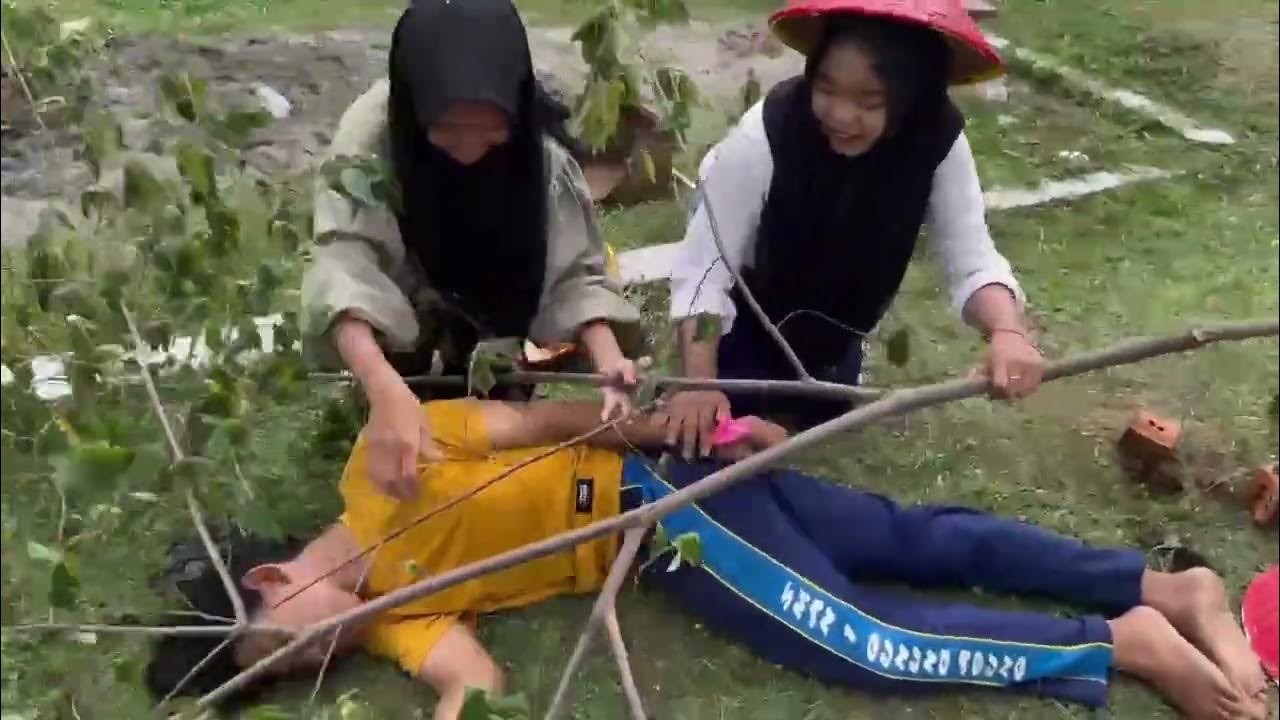Project DINA: Landslide
Summary
TLDRThe video script discusses Project Dina, an initiative aimed at disaster preparedness in the Philippines. It highlights the inevitability of natural disasters like typhoons, volcanic eruptions, and landslides, and emphasizes the importance of being prepared. The script provides signs of impending landslides, advises on safe construction practices, and stresses the need for emergency plans. It also offers safety tips for different scenarios, such as being indoors during a landslide, and the importance of heeding official advisories for a quick and safe response.
Takeaways
- 🌪️ Natural disasters like typhoons, volcanic eruptions, earthquakes, and landslides are inevitable but can be prepared for.
- 📢 Project Dina aims to provide nationwide awareness about disasters, ensuring people are informed and know what to do to prepare for them.
- 🏠 Landslides can occur at any time due to heavy rain and earthquakes, especially in areas with steep slopes and loose soil.
- 👀 Signs of a potential landslide include cracks in the ground, tilting of trees and posts, sudden water springing from the ground, and changes in water flow.
- 🏡 Do not build houses or structures in areas prone to landslides, such as near the base of steep slopes or in areas with a history of landslides.
- 🚨 Know the emergency and evacuation plans in your area and discuss them with your family, especially during heavy rain or typhoons.
- 🏃♂️ If you observe signs of a landslide, evacuate quickly and take your emergency survival kit with you.
- 🚗 When driving, be cautious of falling rocks and debris, and avoid crossing bridges or being in areas where a landslide has occurred until local officials declare it safe.
- 🏗️ After a landslide, inspect your home's foundation, water lines, electrical posts, and surroundings for any damage and report it to the authorities if necessary.
- 📡 Stay informed about the latest advisories from television, radio, social networking sites, and local officials to be prepared for any natural disasters.
Q & A
What is Project Dina and what does it aim to do?
-Project Dina is a disaster information project aimed at nationwide awareness. It is designed to provide sufficient knowledge about natural disasters and what actions to take to prepare for them, ensuring the safety of families and communities.
What are some of the natural disasters mentioned in the script that cannot be avoided?
-The script mentions typhoons, volcanic eruptions, earthquakes, and landslides as natural disasters that cannot be avoided.
What are the signs of an impending landslide according to the script?
-The script lists several signs of a potential landslide, including cracks in the ground, tilting of trees and poles, sudden appearance of water on the ground, changes in the water flow, and unusual sounds like rumbling that indicate the breaking of trees and falling rocks.
What precautions should be taken to avoid landslides?
-To avoid landslides, the script advises not to build houses or structures on steep slopes with loose soil or in areas with a history of landslides, such as those prone to debris flow, debris avalanche, slum, mud flow, rockfall, and others.
What should one do during heavy rain or a storm to stay safe?
-During heavy rain or a storm, one should be alert to observe the environment for signs of landslides, evacuate if necessary, and carry an emergency survival kit.
What should you do if you are inside a building during a landslide?
-If inside a building during a landslide, the script suggests staying inside and taking shelter under a sturdy table or in a strong part of the house.
How should one react if they are outside when a landslide occurs?
-If outside during a landslide, one should avoid areas that could be the path of the landslide and move to a safe location, being cautious of the possibility of sudden water level rises in streams or rivers.
What are the signs of a flash flood or debris flow mentioned in the script?
-The script mentions that a sudden drop in the normal water level of a stream or river could be a sign of a landslide upstream, which may lead to flash floods or debris flow.
What should drivers do to stay safe during a landslide?
-Drivers should be cautious of falling rocks, mud, and debris on the road, and avoid crossing bridges or going near landslide areas until local officials declare it safe.
What actions should be taken after a landslide to ensure safety?
-After a landslide, one should inspect the foundation of their house, water lines, electrical posts, and surroundings for any damage, report it to the authorities if necessary, and inform them of any injured or missing people. It's also important to follow the latest advisories from television, radio, social networking sites, and local officials.
Why do landslides occur and how can they affect our lives?
-Landslides occur due to gravity, which is the natural force of the Earth's magnetism. They can be triggered by heavy or prolonged rainfall and can disrupt our lives and properties. It is crucial to be prepared for such events.
Outlines

This section is available to paid users only. Please upgrade to access this part.
Upgrade NowMindmap

This section is available to paid users only. Please upgrade to access this part.
Upgrade NowKeywords

This section is available to paid users only. Please upgrade to access this part.
Upgrade NowHighlights

This section is available to paid users only. Please upgrade to access this part.
Upgrade NowTranscripts

This section is available to paid users only. Please upgrade to access this part.
Upgrade Now5.0 / 5 (0 votes)





